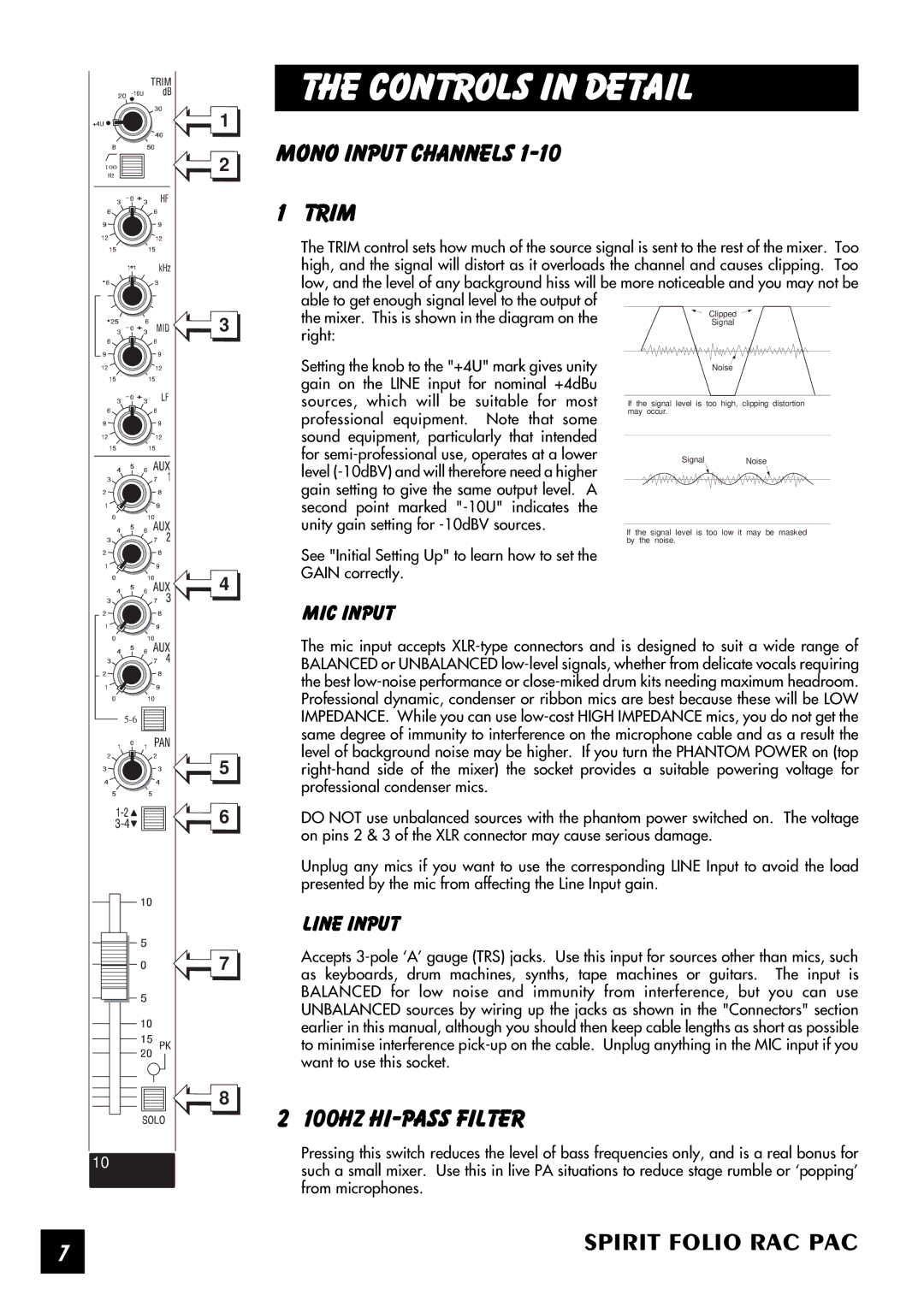
100
1
2
3
THE CONTROLS IN DETAIL
MONO INPUT CHANNELS 1-10
1 TRIM
The TRIM control sets how much of the source signal is sent to the rest of the mixer. Too high, and the signal will distort as it overloads the channel and causes clipping. Too low, and the level of any background hiss will be more noticeable and you may not be able to get enough signal level to the output of
the mixer. This is shown in the diagram on the right:
Setting the knob to the "+4U" mark gives unity gain on the LINE input for nominal +4dBu sources, which will be suitable for most professional equipment. Note that some sound equipment, particularly that intended for
SignalNoise
If the signal level is too low it may be masked by the noise.
10
4
5
6
7
8
See "Initial Setting Up" to learn how to set the
GAIN correctly.
MIC INPUT
The mic input accepts
DO NOT use unbalanced sources with the phantom power switched on. The voltage on pins 2 & 3 of the XLR connector may cause serious damage.
Unplug any mics if you want to use the corresponding LINE Input to avoid the load presented by the mic from affecting the Line Input gain.
LINE INPUT
Accepts
2 100Hz HI-PASS FILTER
Pressing this switch reduces the level of bass frequencies only, and is a real bonus for such a small mixer. Use this in live PA situations to reduce stage rumble or ‘popping’ from microphones.
7 | SPIRIT FOLIO RAC PAC |
| |
|
|
